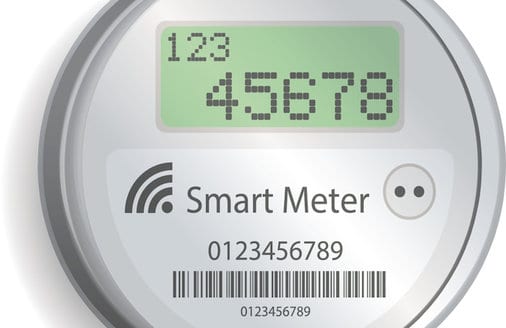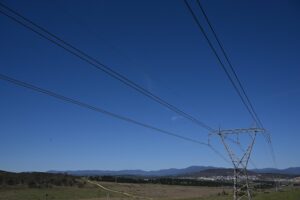
California’s recently passed Senate Bill (SB) 350 reinforces the state’s reputation as a leader in climate change policy. The bill sets state targets of 50 percent electricity generated by renewables and 50 percent increase in building energy efficiency by 2030. But what may be most remarkable in the bill is the change in how the state evaluates and promotes energy efficiency.
The bill proposes tracking efficiency by actual meter-based savings and authorizing pay-for-performance programs that link incentives directly to those savings. The legislation will help the regulated market pave the way for the free market to value efficiency as an investible asset class, where third-party aggregators sell efficiency services to customers. The vision of RMI cofounder and chief scientist Amory Lovins—first espoused in 1990—of an emerging “negawatt market” making saved electricity a fungible commodity is at last coming of age.
Linking program impacts to measured performance supports integrated demand-side management (IDSM), which includes load control efforts achieved through efficiency and demand response to best match distributed renewable energy generation patterns. While variable distributed renewables can shift conventional thermal power plant baseload needs and create grid management challenges, promoting these IDSM components in a coordinated fashion can provide an integrated, holistic demand solution. As recent RMI reports such as the Economics of Demand Flexibility have shown, energy efficiency and demand response can change the shape of daily demand—achieving buildings that are friendly to the grid.
By basing goals, budget, evaluation, and incentives on actual measured performance, the SB 350 authorization of pay-for-performance programs promotes IDSM and next-generation utility programs. Project savings determined from measured performance using interval data provide the level of granularity necessary to truly value the benefit of efficiency investments impacting energy and demand. Currently, measurement-based savings evaluations are typically made after the fact using monthly utility data, which veils cause and effect and undermines the true value of efficiency investment. The potential for ongoing data-intensive savings assessments is being spurred by the increased prevalence of high-resolution smart meters, inexpensive computing power, and the development of comprehensive data analytics. The approach affords integrated solutions better aligned with IDSM objectives. It represents a fundamental change from rebate-type programs that lack direct feedback loops linked to their actual impact. This paradigm shift has the potential to more fully capture savings opportunities that go beyond equipment upgrades by also accounting for previously allusive savings resulting from system interactive effects and behavioral and operational changes. Including ongoing measurement improves information timeliness and investment attractiveness.
These features of next-generation pay-for-performance programs have the potential to pave the way for the negawatt free market.
Implementing the new paradigm
Assembly Bill (AB) 802 establishes the guidelines necessary for evaluation and measured energy performance. To support the bill, the California Public Utility Commission (CPUC) has stepped in to provide recommendations for conforming program requirements, resulting in a recently released ruling that provides an interim framework for early program implementation. The ruling aims to support the “legislatively-directed integrated look at energy efficiency portfolios,” which supports IDSM. The CPUC contributions reflect the commission’s overarching objective to encourage innovative programs capturing incremental savings from activities not already accounted for in current code or utility programs.
The ruling indicates the direction, requirements, and benefits of pay-for-performance programs; includes capital improvement projects as well as behavior, operational, and/or retro-commissioning measures; and imbeds a more robust approach to measurement and verification (M&V) based on measured performance. Such an approach will help reduce the confusion and contention surrounding current after-the-fact evaluation methods. Current methods focus on energy-using equipment and do not fully account for all efficiency savings opportunities. This makes it difficult to meet increasingly aggressive efficiency targets, like those outlined in SB 350 and the new EPA Clean Power Plan.
A less-integrated approach requires savings be attributed to specific program areas—for example, distinguishing savings between code and the utility program impacts. Complex evaluations that take into account code baselines, equipment life at time of change out, and maintenance practices require a preponderance of data and are time-consuming and expensive. The approach consumes program budgets that might be better allocated to incentives or education. Pay-for-performance programs with measurement-based savings provide timely feedback loops for customers, program administrators, and regulators. These features simplify the process and make energy efficiency an investable resource, requiring less regulation and skirting the need for supporting legislation, commission oversight, and utility involvement.
Standardizing “Negawatt” Measurement with M&V 2.0
Fundamental to both pay-for-performance programs and a true negawatt market is a reliable, standardized, and transparent approach for quantifying energy savings based on dynamic, adjusted metered consumption. While the basic methods are already defined, the advent of smart meters that provide whole-building interval data and data-rich M&V analytics (termed M&V 2.0) are bolstering the effort. Interval data with time scales of 1-hour or less, coupled with analytics, provide an indication of building and energy end-use load shapes. Historically, monthly utility data have been used for whole-building M&V, which do not provide time-of-use resolution. New algorithms and tools are being developed to streamline the M&V 2.0 process to support the changing M&V paradigm and efficiency procurement process.
For example, new, advanced data analytics support automated baseline creation and verified savings determination (automated M&V). Such approaches can support intelligent efficiency solutions incorporating one-time capital and ongoing operational improvements, similar to RMI’s Commercial Energy+ objectives. The new methods and supporting data analysis tools need to generate reliable and repeatable results to manage investment risk and ensure market acceptance at scale. Although M&V 2.0 public domain tools exist that openly reveal the algorithms underlying the regressions and adjustments, a slew of new internet-based black-box software systems are becoming available. There is a need for testing protocols and test sets to validate the analytics for baseline projection accuracy without needing to know the underlying algorithms. In order for M&V 2.0 to reach its full potential, several methodological considerations need to be resolved, including:
- Establishing the percent savings discernable through data-rich, whole-building M&V 2.0 methods
- Evaluating the accuracy and replicability of commercial and public M&V algorithms, as well as implications of the pre-installation baseline data collection time period
- Differentiating between normalization procedures and parameters that support grid delivered savings versus retrofit guarantees
- Defining test protocols for comparing and evaluating analytical tools
- Developing building technology platforms with standardized data exchange, integration of equipment and controls, and software-as-a-service layers
- Demonstrating platforms to support scalable market-based negawatt procurement
New research and leading efforts
These emerging needs are starting to be addressed through research and demonstration programs and projects. For example, recent research by Lawrence Berkeley National Laboratory (LBNL) documents the accuracy of 10 M&V 2.0 tools—each employing different analytics—when applied to a large test data set comprised of over 500 commercial buildings. The promising results show that the data models were able to predict whole-building (baseline) energy use for most all of the buildings with a level of accuracy that meets industry standards. LBNL is currently involved in follow on work that involves defining a test protocol to evaluate the accuracy of M&V savings predictions. Once validated, it can be adopted by industry to prequalify tools and vendors.
Pacific Gas & Electric (PG&E) is jump-starting the negawatt market through the launch of a two-year residential pilot program directed at third-party aggregators that get paid based on outcome rather than the delivery of efficiency services. The program uses the CalTRACK/Open EE meter and measurement system, a new open source public tool that is built on existing open industry tools to support data collection, cleaning, exchange, and analytics in a consistent and transparent manner. It provides a platform to support scalable market-based negawatt procurement. It’s envisioned to serve a wide range of market players and provide a quick feedback loop to support market innovation and success.
The Metered Energy Efficiency Transaction Structure (MEETS) is a new contract construct being field tested at the Bullitt Center, as part of a pilot utility power purchase agreement between EnergyRM, Seattle City Light, and the Bullitt Center. In the pilot, energy savings attributed to the newly constructed Bullitt Center are determined in real time through automated M&V using EnergyRM’s DeltaMeter, an M&V 2.0 product. The MEETS solution is creating cash flow for the investor while not effecting costs or changing payments for anyone occupying the building, which avoids split incentive issues.
M&V 2.0 and supporting technical platforms underpin the data-rich approach that can be adopted by next-generation utility programs and private sector financing of efficiency. While challenges exist for testing and standardizing these data-intensive methods, existing M&V protocols with long-time industry acceptance are still applicable. And the efficiency market has much to gain from using interval data to base savings on measured performance. The approach being taken in California, through SB 350 and AB 802, and by others promoting similar programs, has the potential to support growing utility revenue and unit sales while meeting IDSM objectives. The ultimate win though will be when such efforts result in building efficiency being properly valued as a commodity that can be measured and competitively delivered against traditional supply-side resources.








